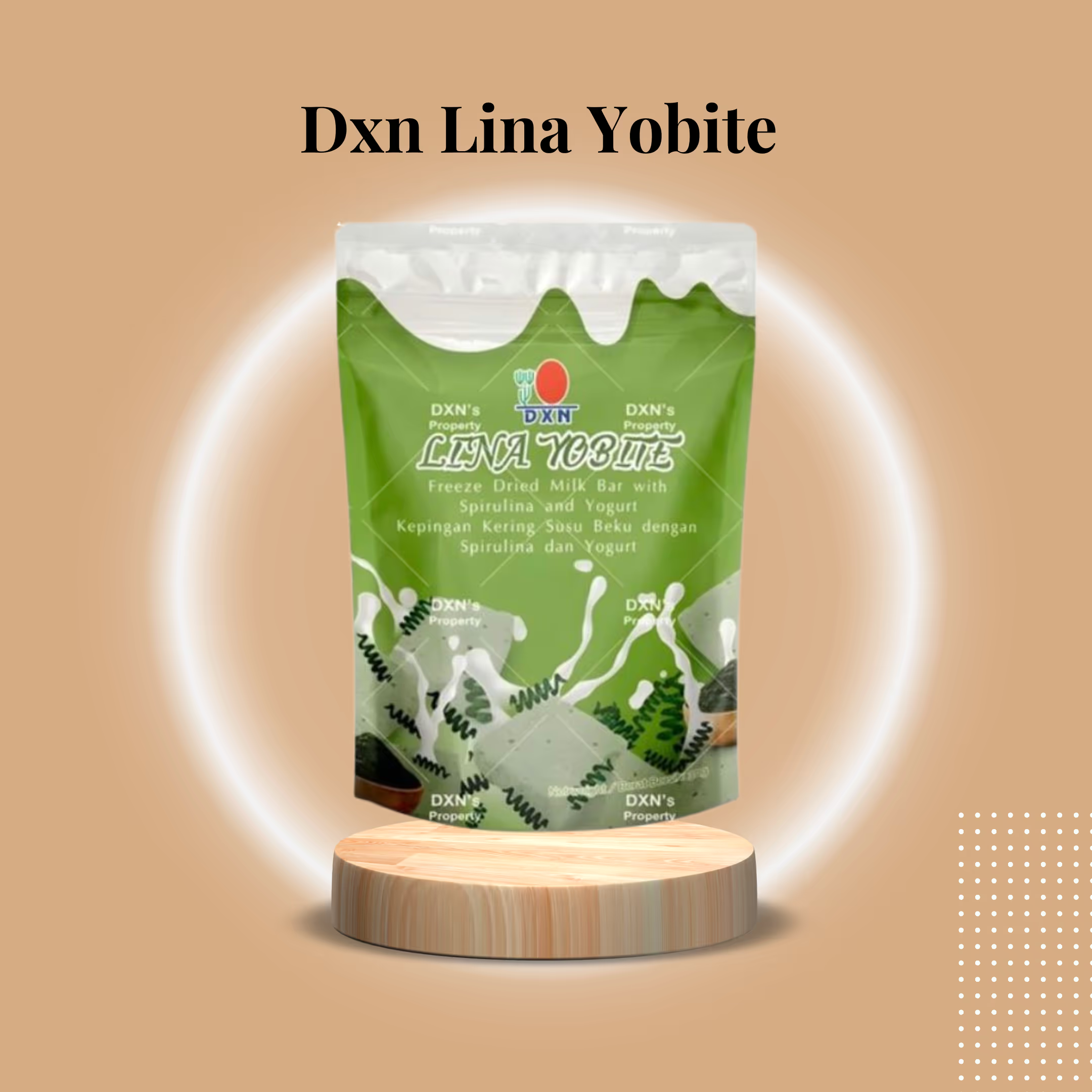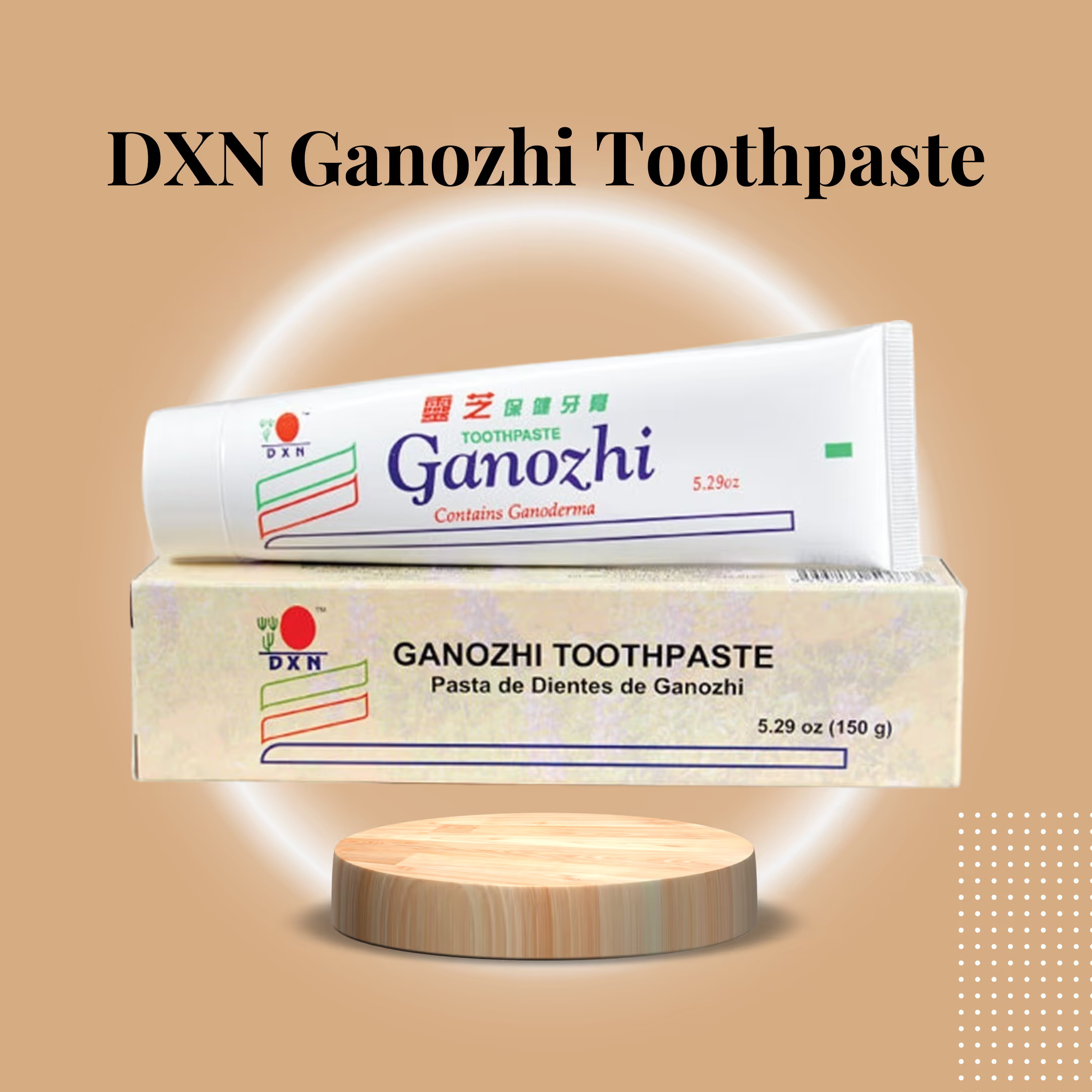What is DXN Lina Yobite?
DXN Lina Yobite is a freeze-dried yogurt snack infused with Spirulina, presented as small crunchy cubes that contain live probiotic cultures. Rather than a refrigerated drink or a capsule, Lina Yobite is a lightweight, shelf-stable bite that aims to deliver the functional benefits of yogurt (probiotics, protein, and calcium) combined with the nutritional punch of Spirulina (high-quality protein, B vitamins, iron, phycocyanin, and other antioxidants).
Key features:
- Format: Bite-sized, freeze-dried yogurt cubes.
- Primary actives: Live lactic acid bacteria cultures from yogurt + Spirulina (blue-green algae).
- Shelf life & storage: Long ambient stability — no refrigeration required.
- Target users: Busy people, travellers, children, and anyone wanting reliable daily probiotic support — with a particular product positioning for women’s nutritional needs.
Why the format matters: freeze-drying (lyophilization) explained
The difference between an effective probiotic product and a disappointing one often comes down to survivability — how many live cells actually reach your gut. That’s where freeze-drying shines.
What freeze-drying does
- Freezes the product solid to preserve cell structure and delicate plant compounds.
- Applies a vacuum and gently warms, allowing ice to sublimate directly into vapor, thereby removing moisture while avoiding high temperatures that would otherwise damage microbes or oxidize nutrients.
- Results in a dry, porous structure that preserves viability and flavor, and resists microbial spoilage — until the product is rehydrated in the body.
Compared with typical drying methods (hot-air drying, spray drying) or refrigerated liquids, lyophilized products retain much higher counts of viable probiotic cells and a more intact micronutrient profile. That’s why Lina Yobite’s cubes can be stored without refrigeration and still deliver potent live cultures when consumed.
The two core ingredients: yogurt cultures + Spirulina — what each brings
Yogurt cultures (Lactic Acid Bacteria)
Yogurt provides the probiotic backbone. Typical yogurt cultures include strains of Lactobacillus and Bifidobacterium families — microbes associated with:
- helping maintain microbial balance,
- supporting digestion and stool regularity,
- strengthening the intestinal barrier,
- modulating local immune responses in the gut.
When processed via freeze-drying using protective carriers and cryoprotectants, these beneficial strains can survive processing and storage in high numbers, then reactivate in the gut to deliver functional effects.
Spirulina (Arthrospira spp.)
Spirulina is not a probiotic — it’s a nutrient-dense cyanobacterium (a blue-green algae) included in Lina Yobite for complementary nutrition. It contributes:
- Complete, highly digestible protein (rich in essential amino acids), which supports tissue repair and satiety.
- B vitamins and iron, which are essential for energy metabolism and the prevention of iron-deficiency symptoms, are particularly relevant for menstruating women.
- Phycocyanin is a characteristic antioxidant pigment that offers anti-inflammatory and free-radical scavenging activity.
- Gamma-linolenic acid (GLA) is sometimes reported to be present in Spirulina. GLA is an omega-6 fatty acid that is linked to the modulation of inflammatory prostaglandins, which play a role in menstrual discomfort for some women.
Taken together, yogurt cultures and Spirulina create a synbiotic-like profile, comprising probiotics and a nutrient matrix that supports host nutrition and potentially enhances probiotic activity indirectly.
How Lina Yobite works in the body (mechanisms simplified)
- Oral consumption: Eat a cube. The freeze-dried structure protects microbes and sensitive nutrients until they are ingested.
- Transit through the stomach: The dry matrix helps many cells resist total destruction by stomach acid; some rehydrate and pass into the intestine.
- Colonization and activity: Viable lactic acid bacteria can transiently colonize the gut, helping to crowd out opportunistic microbes, produce beneficial metabolites, and support barrier function.
- Metabolite production: Gut fermentation of fibers and substrates leads to the production of Short-Chain Fatty Acids (SCFAs), including acetate, propionate, and butyrate — these serve as energy substrates for colonocytes and have systemic metabolic and immune effects.
- Spirulina’s support: Antioxidants, iron, and B-vitamins from Spirulina support cellular energy, reduce oxidative stress, and can help with menstrual health indirectly by supporting nutrient status.
Put simply, Lina Yobite aims to harness the beneficial aspects of the microbiome while delivering concentrated nutrients that support energy and immune resilience.
Benefits and purpose of use (what people commonly experience)
Digestive balance & regularity
Consistent intake of probiotics can help normalize stool patterns in individuals with minor irregularities, reduce occasional bloating, and support smoother digestion by enhancing enzyme and microbial activity.
Immune support
Since a large portion of the immune system resides in the gut (GALT), improving gut ecology is a valid route to supporting immune responsiveness and reducing pro-inflammatory signaling.
Metabolic & energy benefits
Microbial fermentation yields SCFAs that serve as energy substrates for gut cells and contribute to overall metabolic efficiency. Spirulina’s B vitamins and iron further support energy metabolism.
Women’s health support
Lina Yobite emphasizes benefits for women by offering Spirulina’s nutrients (iron, folate, GLA) that can help regulate inflammatory prostaglandins and support healthy blood parameters during menstruation. While not a drug or treatment, these nutrients are commonly recommended to support menstrual wellness.
Portability & adherence
Because Lina Yobite is shelf-stable and palatable, it removes barriers to daily probiotic intake — travel, office storage or busy schedules become less of an obstacle to consistent use.
Practical usage: how to consume Lina Yobite
Typical serving & timing
- One or more cubes daily is common; check product packaging for the manufacturer’s recommended serving size.
- Best taken between meals or as a snack: many consumers prefer morning or mid-afternoon. Eating alongside a small amount of carbohydrate or food can improve the survival of probiotics during stomach transit (by buffering acidity).
Ways to enjoy
- Eat cubes straight from the pack as a crunchy probiotic snack.
- Sprinkle over breakfast bowls (oatmeal, granola), yogurt (if not dairy-free), or salads.
- Crush and mix into smoothies — note that adding warm liquids may reduce viability, so blend at cooler temperatures to preserve maximum live cells.
Children & family use
The cubes’ taste and texture make them convenient for kids’ lunchboxes. Dosage for children should follow the product instructions or the advice of a pediatrician.
Storage, stability & best practices
- Store in a cool, dry place away from direct sunlight.
- Keep the resealable bag tightly closed between uses to protect the cubes from moisture (moisture is the main enemy of lyophilized products).
- If exposed to humidity, the cubes may lose their crunch, and viability could be reduced. Always reseal and use within the recommended time after opening.
Safety, contraindications, and interactions
- Generally safe for most healthy people as a food product.
- Immune-compromised individuals, organ transplant recipients, or people undergoing chemotherapy should consult a healthcare professional before taking live microbial supplements or foods containing live cultures.
- People with severe milk allergies should check the ingredients list — while Lina Yobite’s base is yogurt, processing can change allergen status; read labels carefully.
- Pregnant or breastfeeding individuals should discuss with their clinician when introducing new concentrated supplements.
- Medicines or conditions: If you are taking prescription medications or have chronic conditions, consult your healthcare provider before starting any new functional food.
The science behind short-chain fatty acids and energy
When beneficial microbes ferment dietary fibers and certain substrates, they produce SCFAs — chiefly acetate, propionate, and butyrate. These molecules:
- nourish colon cells (butyrate),
- support gut barrier integrity,
- influence appetite regulation and energy expenditure,
- interact with metabolic signaling pathways that can affect systemic inflammation and glucose regulation.
By helping to populate the gut with beneficial bacterial strains, Lina Yobite contributes to the ecosystem that favors SCFA production — an important mechanism for enhancing metabolic vitality and resilience.
Spirulina’s nutritional contribution: more than color
Spirulina is often included in functional blends for reasons beyond novelty:
- High biological value protein — easily digestible and rich in essential amino acids.
- Iron & folate — support hemoglobin formation and energy, which can help minimize fatigue.
- Antioxidants, such as phycocyanin, reduce oxidative stress, which is beneficial across various systems, including immune function and recovery after exercise.
- Potential GLA content — may modulate inflammatory prostaglandins linked to menstrual discomfort (evidence varies; Spirulina is a nutrient source rather than a pharmaceutical).
Who benefits most from Lina Yobite?
- People who want daily probiotic support without the need for refrigeration.
- Travelers and commuters who need portable, stable gut support.
- Parents looking for a kid-friendly, nutrient-dense snack for lunchboxes.
- Women seeking mild nutritional support for menstrual health and iron intake (as a complementary, not primary, solution).
- Those who dislike probiotic drinks or capsules and prefer a food-based approach.
How Lina Yobite fits into a broader wellness routine
Lina Yobite is best viewed as one helpful tool within a larger lifestyle:
- Dietary fiber (fruits, vegetables, whole grains) feeds probiotics and amplifies SCFA production.
- Regular physical activity supports gut motility and microbial diversity.
- Stress management and sleep matter because stress and sleep disruption can alter microbiome composition.
- Targeted supplements (vitamin D, omega-3s) can be combined as needed, based on individual needs.
Quality & traceability: what to look for on the label
When choosing any freeze-dried probiotic food:
- Check the listed strains and the provided minimal viable counts.
- Inspect the ingredient list for added sugars, preservatives or unnecessary fillers.
- Look for manufacturing standards (e.g., GMP, ISO) and verify whether the brand provides transparent sourcing and quality control. DXN typically emphasizes vertical control over production, which increases traceability and consistency.
Practical recipe ideas and daily rituals
- Morning crunch: 1–2 cubes sprinkled onto overnight oats or mixed into cereal.
- Smoothie booster: Crush cubes into a cold smoothie after blending (avoid hot liquids).
- Lunchbox treat: Pack a small resealable sachet as a healthy alternative to candy.
- Post-travel reset: Use a cube daily during and after travel to support gut adjustment.
.avif)





